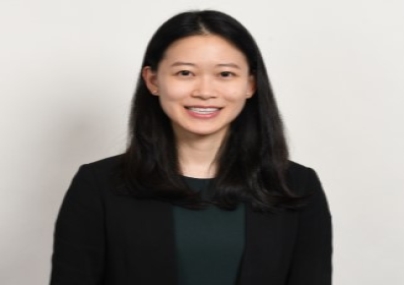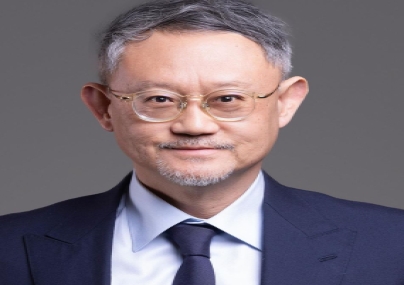Until a few years ago there was just one contender for the role of arbitration heavyweight in Asia. Now Singapore, named the most popular Asian seat in the 2010 International Arbitration Survey, is seriously challenging Hong Kong’s title. Few in the arbitration field can fail to be impressed by Singapore’s recent meteoric rise in the world of alternative dispute resolution (ADR), few except perhaps Hong Kong, which now feels its crown of Asian arbitration champion slipping away. Singapore’s rise has been as impressive as it has been unsurprising: a proactive government, proximity to up-and-coming economies like India and the Southeast Asian region and some very positive perceptions have combined to turn the island into a formidable arbitration force.
Relaxed or remiss?
“Singapore has been at the forefront of fashioning a very pro-arbitration regime in recent years,” says Randolph Khoo, director of dispute resolution at Drew & Napier, while according to May Tai, Beijing-based dispute resolution partner at Herbert Smith, “Hong Kong has been more relaxed in its fame as an arbitration centre.” Singapore’s rise began quietly enough 10 years ago, when SIAC transitioned from primarily providing facilities for arbitration to administering arbitrations. This was shortly followed by the Legal Services Working Group of the Economic Review Committee stressing the need for “good infrastructure and facilities” to make Singapore a regional alternative dispute resolution services centre. By 2006, the momentum was gathering and a high-level committee was formed to review the legal services industry in Singapore. Its report in September 2007 talked of Singapore standing “in the cross winds of the two rising major Asian economies” and the opportunities this afforded with regard to “alternative dispute resolution services such as arbitration and mediation.”
The report talked of the advantages Singapore had as an arbitration venue: “world-class infrastructure, excellent support facilities and services, a clean and safe environment, political and social stability, and a strong tradition of the rule of law supported by a capable and pragmatic judicial system.” However, it also went on to make further recommendations aimed at attracting foreign arbitrators and law firms to work out of Singapore. “The administrative processes for entering Singapore for foreign lawyers and arbitrators were streamlined” says Minn Naing Oo, Chief Executive Officer & Registrar at SIAC, “Singapore also enacted legislative changes including freedom for foreign lawyers and arbitrators to practise arbitration in Singapore, clarifying the powers of the courts with regard to the granting of interim measures in support of foreign arbitrations, and also to introduce a framework for authenticating arbitration awards.” However, perhaps the crowning glory was the unveiling of plans for an integrated arbitration facility – a complex with custom-built hearing rooms and state-of-the-art facilities, and Maxwell Chambers has delivered on its promises to provide the “world’s first integrated dispute resolution complex.” At this point alarm bells should perhaps have been ringing for Hong Kong, however, according to statistics taken from the HKIAC and SIAC websites, HKIAC handled 448 disputes in 2007 while SIAC handled just 86.
Most popular Asian seat?
It was the calm before the storm, however. Between 2008 and 2010, the number of disputes handles by SIAC had doubled and then came the publication of the 2010 International Arbitration Survey. The survey, carried out by the School of International Arbitration, Queen Mary, University of London (SIA), and sponsored by White & Case LLP, states “… it appears that the promotion of Singapore as an arbitral seat with conferences and the active involvement of more arbitral institutions (such as ICC and AAA/ICDR) have paid dividends and Singapore clearly emerges as the most popular Asian seat.” Needless to say, not everyone agrees on Singapore’s number one ranking.“There were some discrepancies in that survey,” says James Kwan, a Hong Kong-based partner in Baker & McKenzie’s dispute resolution practice group, adding that he believes that the number of respondents and their geographical placing may not have been representative.
Chiann Bao, secretary general of the HKIAC, adds: “The rankings by the 2010 survey are not necessarily indicative of what we have seen at the HKIAC and in Hong Kong generally. Hong Kong has had a long-standing reputation of being an arbitrationfriendly venue. This reputation is not one which can be easily discounted by the results of a single survey.” “Asia represents the biggest group of respondents and the results are favourable for Singapore, and also for Tokyo,” responds Loukas Mistelis, director of the SIA’s Centre for Commercial Law Studies, and a lead member of the team behind the survey. He goes on to acknowledge the financial and time limitations of every study, however, but says that while his team didn’t conduct interviews in Hong Kong or interview lawyers (they typically interviewed in-house counsels, CEOs and CFOs), they did work with social scientists to ensure the survey met acceptable standards.
Lies, damned lies and statistics
The two jurisdictions are different, explains Kwan, with Hong Kong having the advantage of being the pre-eminent place of arbitration for PRC parties not arbitrating on the mainland. “Hong Kong has more cases,” he adds simply. This is evidenced by the 2010 statistics with SIAC handling 198 new arbitration cases in 2010, while HKIAC handled 624 dispute resolution matters, including 291 arbitrations, 107 domain name disputes and 226 mediations.
According to Tai, while Hong Kong may have more cases, this doesn’t necessarily mean it is more popular. “You also need to consider the types of disputes. Hong Kong is a bigger player,” she says, “but it may be that disputes arise from within, that would naturally be held in Hong Kong, while Singapore may primarily [attract] international cases – although there’s no good reason why this should be the case. The arbitration infrastructures behind…both jurisdictions should be seen as regional hubs for international cases.”
This is supported by Mistelis. “Singapore is a highly regarded venue although it may have fewer cases than Beijing or Hong Kong. It does attract genuine international cases with no Singaporean parties,” he says. You only have to look at CIETAC’s statistics to know case numbers don’t indicate popularity. With arbitration hearings in 2010 exceeding a thousand, the PRC would have easily won the popularity contest. Instead, the 2010 survey found that it was one of two seats respondents had the most negative perception of, the other being Moscow. Also, while HKIAC handled more disputes in 2010 this was 32 percent down from 2009, while SIAC figures increased by 23.75 percent.
Geographic proximity
Tai also has a different take on PRC cases. While agreeing that Hong Kong is the preferred venue of PRC clients she says “the proximity to China helps and hurts Hong Kong” referring to how it can be perceived by Western clients in disputes with PRC parties, “even though there is no reason for them to be nervous.” In the case a party refused to have the dispute heard in Hong Kong, the fallback would be Singapore. “Singapore is perceived as being more neutral, independent and free from external influence as compared to Hong Kong which has China’s proximity and influence to contend with,” says Raja Bose, the head of the Asian arbitration practice at K&L Gates. However James Rogers, who leads Fulbright & Jaworski’s arbitration presence in the region, feels any concern that Hong Kong is “subject to undue political influence” from the PRC is “overstated.”
While Hong Kong is favoured by PRC clients, Singapore is the venue of choice for many South East Asia countries. “India and Indonesia were among the top nationalities that used SIAC to arbitrate disputes in 2010. Singapore has strong trade ties and interaction with these two countries, so familiarity is already established. In the case of Indonesia, there is physical proximity as well,” says Leng Sun Chan, principal at Baker & McKenzie.Wong & Leow. “The number of cases involving at least one Indian party has gone up by nearly 200 percent in the past two years” says Ankit Goyal, South Asia head and counsel with SIAC. “Another interesting trend is that the monetary quantum of disputes involving at least one Indian party has similarly gone up by more than 140 percent for the same period…. while the average dispute amount at the SIAC for 2010 was about S$6.5 million [$5 million], the average dispute amount for cases involving Indian parties was about S$11 million.”
In additional to the cultural,geographic and linguistic attractions of Singapore, there is the additional issue that arbitration awards coming out of Hong Kong are not enforceable in India. Although a signatory to the New York Convention, s.44 (b) of India’s Arbitration and Conciliation Act 1996 requires that for a foreign award to be enforceable in India it must be rendered in one of the territories that the Indian government has notified, on the basis that reciprocal provisions have been made by that country. To date, only 44 countries have been notified, and Hong Kong isn’t one of them. However, anecdotal evidence suggests that talks may be underway between the Chinese and Indian governments over this.
Absolute immunity
Another recent factor, reported by some media as giving Singapore an arbitral advantage over Hong Kong, was the Democratic Republic of the Congo and Ors v FG Hemisphere Associates LLC ruling that the doctrine of absolute immunity applied to Hong Kong as it does to the PRC. Reports suggested that this would encourage disputes involving sovereign states to go to Singapore rather than Hong Kong but Mark Lin, a partner with Hogan Lovells in Hong Kong, says this was “overblown”.
The ruling means an award against a sovereign state can’t be enforced unless it has specifically waived immunity, he explains, but that would apply to any award stemming from any arbitral seat. “The choice of venue [for the arbitration hearing] shouldn’t be impacted by this ruling,” he said. However according to Khoo, “the reality is that investors dealing with states selecting Hong Kong based dispute resolution clauses would need to adopt a more cautious approach in negotiating the contract documentation.” He adds that “there will also be the perception issue over the impartiality in the exercise of any supervisory jurisdiction of the Hong Kong courts that would need to be managed,” suggesting such concerns could cause investors to look at other jurisdictions “unburdened by such issues” for resolution of potential disputes. Fighting back Recent measures taken by Hong Kong have been interpreted as a fight back.
“The HKIAC has taken stock of the rise of Singapore and the SIAC over recent years and is responding accordingly,” says Justin D’Agostino, the head of Herbert Smith’s Greater China arbitration practice and recently appointed member of the HKIAC Council. This response includes a new Arbitration Ordinance which introduces a number of key changes including, abolishing the distinction between domestic and international arbitrations, codifying comprehensive confidentiality provisions and widening the scope for arbitral tribunals and courts to order interim measures in support of arbitration. HKIAC also recently appointed four new members to its council: Peter Goldsmith, a former UK Attorney General and a partner at Debevoise & Plimpton; Henri Alvarez, co-chair of Fasken Martineau’s international law practice group; Tim Hill, partner at Hogan Lovells and former chairman of the East Asian branch of the Chartered Institute of Arbitrators and D’Agostino, who says the latest round of appointments “reflects the HKIAC’s efforts to internationalise its governing board.” The 20-member governing body addresses HKIAC policy issues, promotes HKIAC worldwide, and plays a pivotal role in developing Hong Kong as a leading international arbitration centre.In addition, HKIAC has plans to give its facilities “a complete makeover with state-of-the-art technology and equipment,” says D’Agostino, with floor-space at its centrally located offices set to double “to meet, and surpass, demands from across the region.”
Rivalry? What rivalry?
“I think the rivalry part is overdone,” says Nicholas Peacock, a dispute resolution partner at Herbert Smith, echoing a point many practitioners were keen to make, “both have dramatic growth stories and great prospects which do not depend on bettering the other.” “The competition between these two arbitral centres should not be overstated,” says D’Agostino. “Both Hong Kong and Singapore represent leading venues for arbitration. Most international arbitration practitioners operate across both jurisdictions and growth in one need not be at the expense of the other.”
“It is horses for courses,” says Lin. “There’s rivalry, as there is between London and Paris, but then there isn’t.” Meanwhile, Rogers adds: “Many commentators tend to pit Singapore and Hong Kong against each other in an imagined race to be the preeminent arbitration venue in the region. However, Singapore and Hong Kong should be seen as complimentary, offering viable, distinct alternatives for parties wishing to arbitrate in Asia and so together attracting business to the region.”
So how do the institutions themselves feel about each other? “As with any two organisations that provide similar services, there exists some competition,” says Bao from HKIAC. “However, we view any competition that may exist as friendly. Further, we are not driven by this competition and instead focus on encouraging more parties to choose an Asian seat for arbitration.” Meanwhile, Minn from SIAC says: “I think that with the growth of arbitration in Asia as the preferred mode of dispute resolution for transnational deals, both Singapore and Hong Kong will benefit. More and more arbitrations that concern Asia will take place in Asia, and both venues will enjoy growth in cases and activity.”
Friendly future
So perhaps the talk of battles, races, and contests is just media hype. There is rivalry, but it appears to be healthy competition rather than hostility, and that can only be good for the whole region. With Singapore set to host the 21st ICCA Congress in June next year, all arbitrational eyes will be on Asia. Meanwhile Singapore and Hong Kong will, no doubt, continue raising the bar, keeping an eye on each other and any new contenders. “Seoul and Tokyo are both promoting themselves” says Peacock, “with Kuala Lumpur Regional Centre Abitration also making a play.”
So, it may well be time to settle the dispute of Singapore versus Hong Kong and, instead, consider ADR Asia versus The Rest of the World. ALB
 Until a few years ago there was just one contender for the role of arbitration heavyweight in Asia. Now Singapore, named the most popular Asian seat in the 2010 International Arbitration Survey, is seriously challenging Hong Kong’s title. Few in the arbitration field can fail to be impressed by Singapore’s recent meteoric rise in the world of alternative dispute resolution (ADR), few except perhaps Hong Kong, which now feels its crown of Asian arbitration champion slipping away. Singapore’s rise has been as impressive as it has been unsurprising: a proactive government, proximity to up-and-coming economies like India and the Southeast Asian region and some very positive perceptions have combined to turn the island into a formidable arbitration force.
Until a few years ago there was just one contender for the role of arbitration heavyweight in Asia. Now Singapore, named the most popular Asian seat in the 2010 International Arbitration Survey, is seriously challenging Hong Kong’s title. Few in the arbitration field can fail to be impressed by Singapore’s recent meteoric rise in the world of alternative dispute resolution (ADR), few except perhaps Hong Kong, which now feels its crown of Asian arbitration champion slipping away. Singapore’s rise has been as impressive as it has been unsurprising: a proactive government, proximity to up-and-coming economies like India and the Southeast Asian region and some very positive perceptions have combined to turn the island into a formidable arbitration force.

